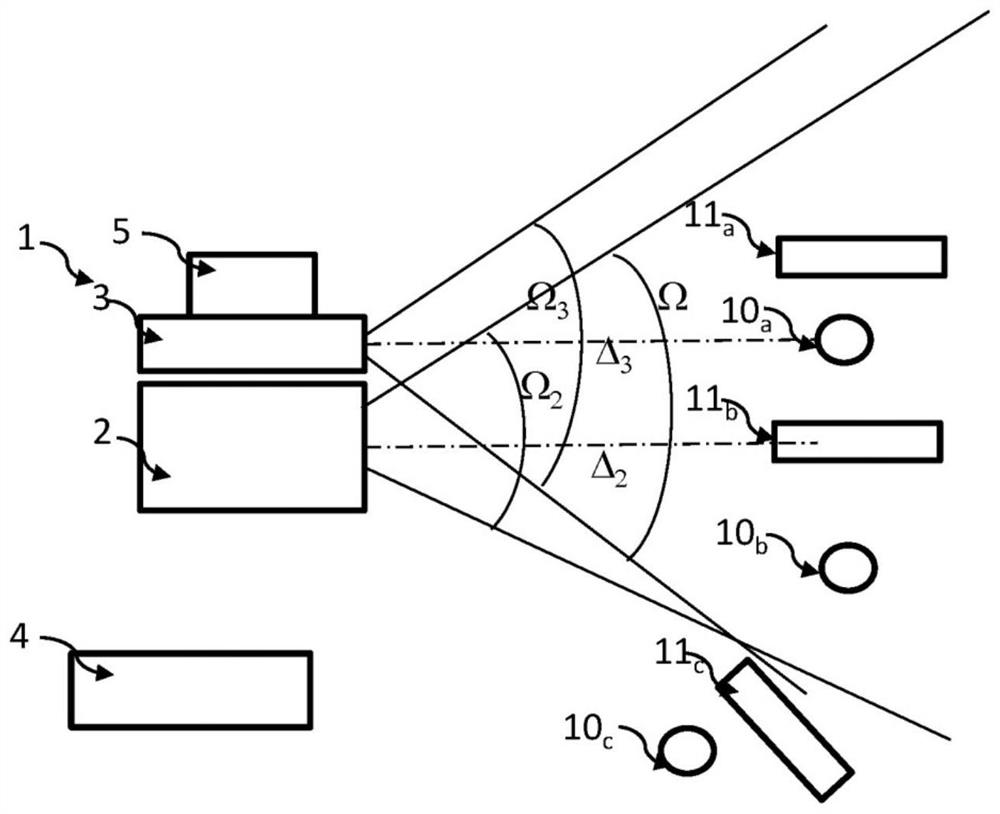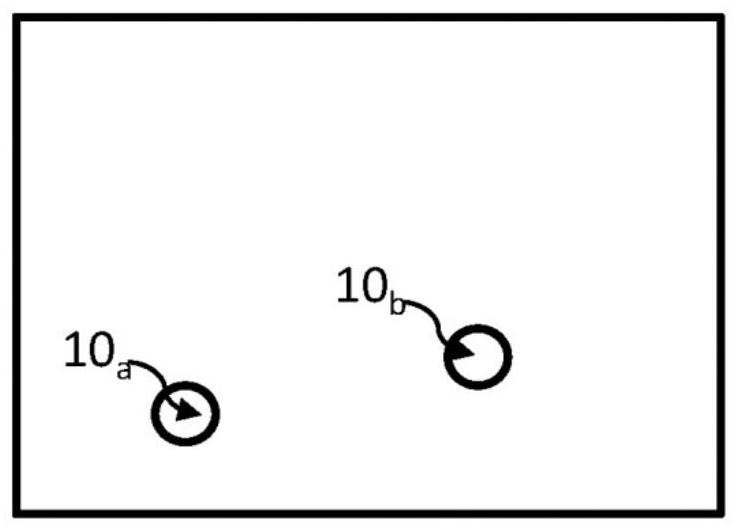Method for tracking position of irradiant source
A radiation source and time measurement technology, applied in the field of radiation sources, can solve problems such as high computing power and not allowing radiation sources to move
- Summary
- Abstract
- Description
- Claims
- Application Information
AI Technical Summary
Problems solved by technology
Method used
Image
Examples
Embodiment Construction
[0071] Figure 1A A measuring device 1 is shown which allows the implementation of the invention. The measurement device includes a gamma imager 2 or a gamma camera. Gamma imagers are configured to detect ionizing electromagnetic radiation of the X-ray or gamma-ray type, typically at energies between 10keV and 10MeV. A gamma imager includes pixels, each pixel corresponding to a fundamental spatial region of the field of view. The pixels are located in the detection plane P. When the elementary spatial region corresponding to a pixel includes an emitting source of X-ray or gamma radiation, some of the radiation emitted by the source reaches and is detected by the pixel. Thus, the amplitude of the signal of a pixel of a gamma image increases as the underlying spatial region associated with the pixel becomes more radiant (ie emits more X-rays or gamma radiation). In the remainder of the description, examples are given in relation to sources of gamma radiation, which correspond...
PUM
 Login to View More
Login to View More Abstract
Description
Claims
Application Information
 Login to View More
Login to View More - R&D
- Intellectual Property
- Life Sciences
- Materials
- Tech Scout
- Unparalleled Data Quality
- Higher Quality Content
- 60% Fewer Hallucinations
Browse by: Latest US Patents, China's latest patents, Technical Efficacy Thesaurus, Application Domain, Technology Topic, Popular Technical Reports.
© 2025 PatSnap. All rights reserved.Legal|Privacy policy|Modern Slavery Act Transparency Statement|Sitemap|About US| Contact US: help@patsnap.com



